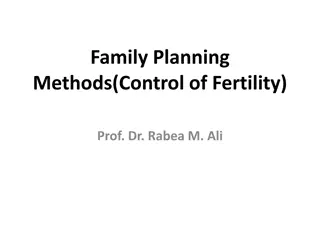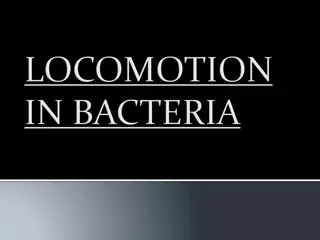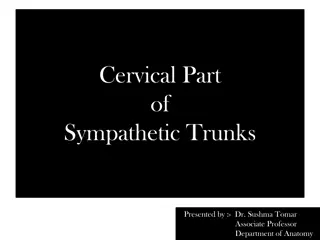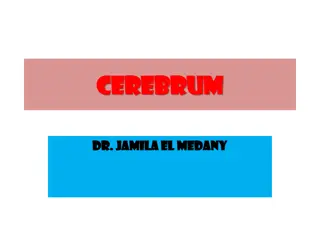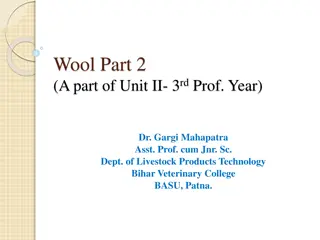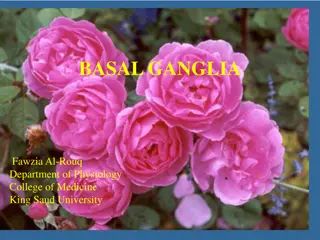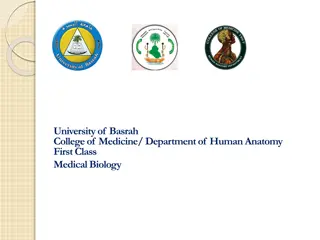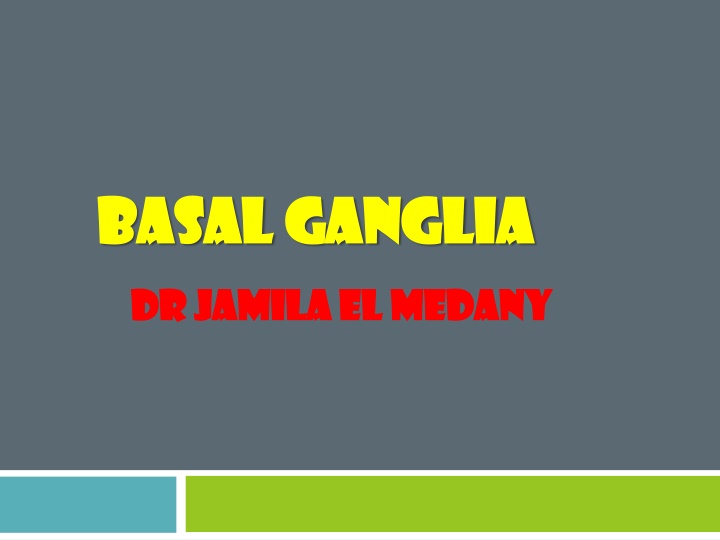
Basal Ganglia and Corpus Striatum Functionality
Explore the components and functions of the basal ganglia, including the Caudate Nucleus, Lentiform Nucleus, Putamen, Globus Pallidus, and their roles in posture and movement control. Learn about the Corpus Striatum and its connection to the extrapyramidal motor system and limbic system.
Download Presentation

Please find below an Image/Link to download the presentation.
The content on the website is provided AS IS for your information and personal use only. It may not be sold, licensed, or shared on other websites without obtaining consent from the author. If you encounter any issues during the download, it is possible that the publisher has removed the file from their server.
You are allowed to download the files provided on this website for personal or commercial use, subject to the condition that they are used lawfully. All files are the property of their respective owners.
The content on the website is provided AS IS for your information and personal use only. It may not be sold, licensed, or shared on other websites without obtaining consent from the author.
E N D
Presentation Transcript
BASAL GANGLIA BASAL GANGLIA Dr Dr JAMILA EL MEDANY JAMILA EL MEDANY
OBJECTIVES OBJECTIVES At the end of the lecture, the student should be able to: Define basal ganglia and enumerate its components. Enumerate parts of Corpus Striatum and their important relations. Describe the structure of Caudate and Lentiform (Putamen & Globus Pallidus) nuclei. Differentiate between striatum & paleostriatum in term of connections. State briefly functions & dysfunctions of Corpus Striatum.
BASAL GANGLIA (NUCLEI) BASAL GANGLIA (NUCLEI) Group of nerve cells deeply situated in cerebral hemispheres Components: Caudate Nucleus Lentiform Nucleus: divided into Putamen & Globus Pallidus Amygdaloid Nucleus CN LN 1. 2. A N 3.
Caudate & Lentiform nuclei are functionally related to each other & called Corpus Striatum :Part of extrapyramidal motor system, principally involved in the control of posture and movements (primarily by inhibiting motor functions) Amygdaloid Nucleus (part of limbic system) is only embryologically related to Corpus Striatum
CORPUS STRIATUM CORPUS STRIATUM (Nomenclature) (Nomenclature) Bands of grey matter pass from lentiform nucleus across the internal capsule to the caudate nucleus, giving the striated appearance hence, the name corpus striatum.
PARTS PARTS LENTIFORM NUCLEUS LENTIFORM NUCLEUS SHAPE: three sided, wedge-shaped mass of grey matter, with a convex outer surface and an apex which lies against the genu of the internal capsule (G) DIVISION: divided into 1. Larger darker lateral portion called Putamen (P) 2. Smaller, lighter medial portion called Globus Pallidus (g) G
Putamen is more closely related to Caudate nucleus (regarding development, function & connections) and together constitute the Neostriatum or Striatum. Globus Pallidus is the oldest part of corpus striatum and is called Paleostriatum or Pallidum
PUTAMEN PUTAMEN Separated from globus pallidus by a thin sheath of nerve fibers, the Lateral Medullary Lamina The white matter lateral to putamen is divided, by a sheath of grey matter, the Claustrum into two layers: External capsule (1) between the putamen and claustrum and Extreme capsule (2) between the claustrum and the insula Insula 2 1
GLOBUS PALLIDUS GLOBUS PALLIDUS Consists of two divisions, the Lateral & the Medial segments, separated by a thin sheath of nerve fibers, the Medial Medullary lamina. The medial segment is similar, in terms of cytology and connections with the pars reticulata of substantia nigra
CAUDATE NUCLEUS CAUDATE NUCLEUS SHAPE: C-shaped mass of grey matter COMPONENTS: head, body & tail Head: -Rounded in shape -Lies anterior to thalamus (in frontal lobe) -Completely separated from the putamen by the internal capsule except rostrally where it is continuous with the putamen
CAUDATE NUCLEUS CAUDATE NUCLEUS Body: -Long & narrow -Extends above thalamus (in parietal lobe) Tail: -Long & tapering -Descends into temporal lobe -Continuous with Amygdaloid Nucleus
CORPUS STRIATUM CORPUS STRIATUM (Important relations) (Important relations) Head of Caudate Nucleus lies: Anterior to thalamus Medial to Lentiform & separated from it by anterior limb of internal capsule (A) Lentiform Nucleus: Lateral to thalamus & separated from it by posterior limb of internal capsule (P) A P
STRIATUM (CAUDATE & PUTAMEN) The input portion of Corpus striatum Cerebral Cortex Thalamus (Intralaminar nuclei) G.P. Lateral segment G.P. Medial segment Striatum Pars compacta Substantia Nigra Afferents Efferents Pars reticulata
PALEOSTRIATUM (GLOBUS PALLIDUS) The output portion of corpus striatum: medial segment of G.P. + Pars Reticulata of S.N. Thalamic fasciculus Thalamus (Ventral lateral, Ventral anterior, centromedian) G.P. Lateral segment G.P. Medial segment Striatum Subthalamic fasciculus Subthalamic Nucleus Pars Afferents reticulata Efferents Substantia Nigra
CORPUS STRIATUM CORPUS STRIATUM Function Function The corpus striatum assists in regulation of voluntary movement and learning of motor skills as they: Facilitate behavior and movement that are required and appropriate. Inhibit unwanted or inappropriate movement.
Dysfunction Dysfunction Its dysfunction does NOT cause: paralysis, sensory loss or ataxia It leads to: I. Abnormal motor control: emergence of abnormal, involuntary movements (dyskinesias) II. Alteration in muscle tone: hypertonia/hypotonia



